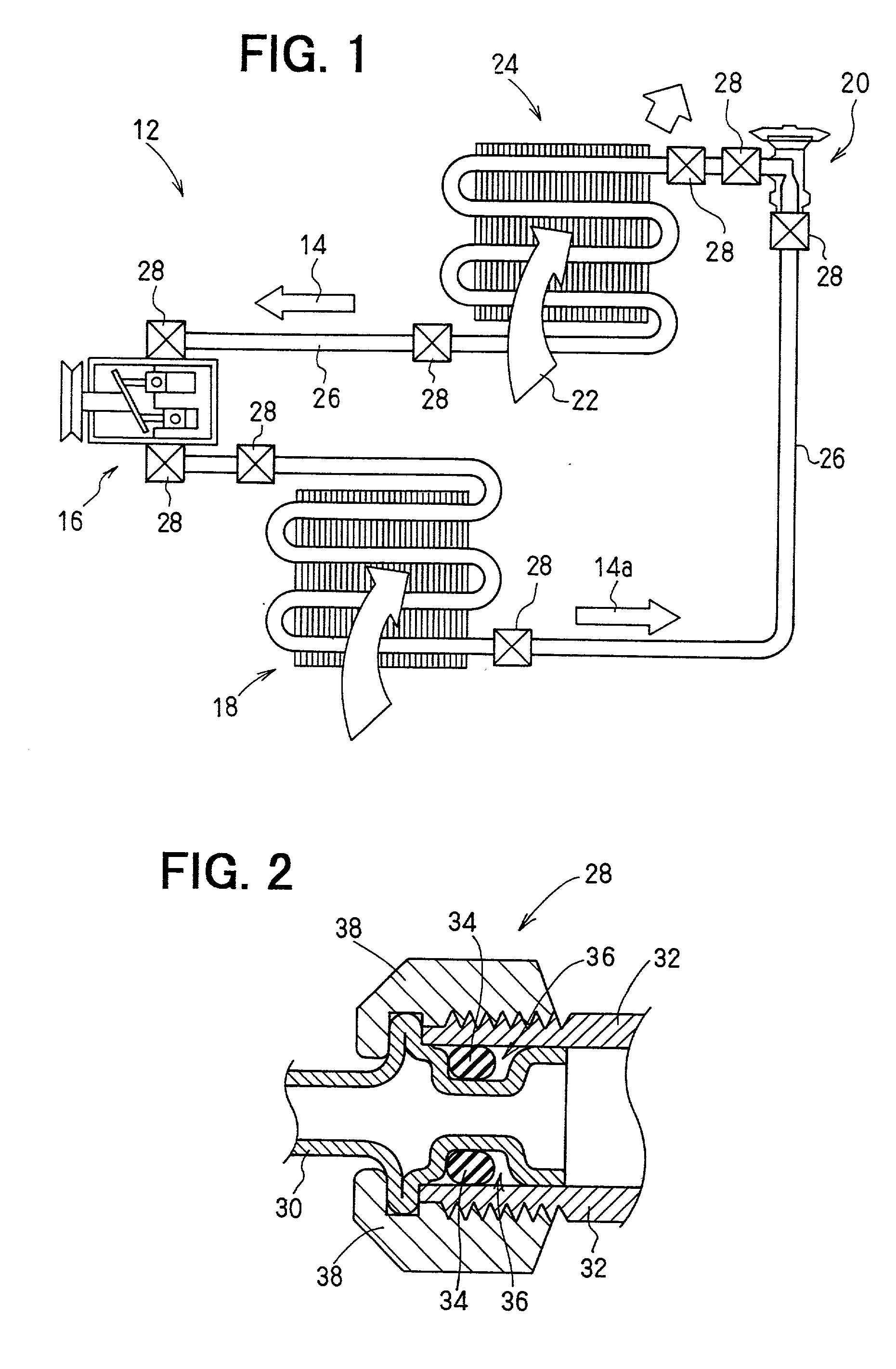Ethylene-propylene copolymer rubber compositions
a technology of polypropylene and composition, applied in the field of ethylenepropylene copolymer rubber, can solve the problems of insufficient gas barrier properties against freon gas, inability to use an oil other than oil, and inability to achieve sufficient gas barrier properties
- Summary
- Abstract
- Description
- Claims
- Application Information
AI Technical Summary
Benefits of technology
Problems solved by technology
Method used
Image
Examples
Embodiment Construction
) Talc 70 wt. % (used only in Present Example 12) Antioxidant 1 wt. % Silane coupling agent 1 wt. %
[0055] (The composition of the rubber polymer differs with examples.)
[0056] Physical properties of rubber compositions are obtained in the Present Examples and the Comparative Examples while changing their kind or formulation are evaluated. The results are shown in Tables 1 to 3. In each of present Examples and the Comparative Examples, hardness (type A), tensile strength (MPa) and elongation (%) in the ordinary state are measured and compared. In addition, a volumetric change (%) in each of polyalkylene glycol and mineral oil and a compression set are measured and compared. Generation of blisters when each of Freon R-134a and Freon R-12 is used is studied and results are compared. Further, a permeation amount of Freon R-134a is measured. In the item concerning blisters in Tables 1, 2 and 3, the polymer free from blisters is indicated by ".largecircle." the polymer generating blisters ...
PUM
| Property | Measurement | Unit |
|---|---|---|
| particle size | aaaaa | aaaaa |
| particle size | aaaaa | aaaaa |
| diameter | aaaaa | aaaaa |
Abstract
Description
Claims
Application Information
 Login to View More
Login to View More - R&D
- Intellectual Property
- Life Sciences
- Materials
- Tech Scout
- Unparalleled Data Quality
- Higher Quality Content
- 60% Fewer Hallucinations
Browse by: Latest US Patents, China's latest patents, Technical Efficacy Thesaurus, Application Domain, Technology Topic, Popular Technical Reports.
© 2025 PatSnap. All rights reserved.Legal|Privacy policy|Modern Slavery Act Transparency Statement|Sitemap|About US| Contact US: help@patsnap.com

